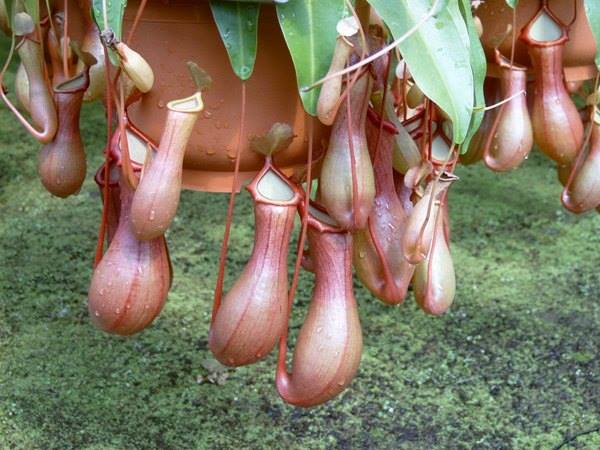
Carnivorous Plants Sri Lanka
Carnivorous Plants Sri Lanka
Global warming is one of the most serious problems in the world, however it has been difficult to find a fruitful solution for it so far. Developed countries around the world, who are largely contributing to the carbon footprint has been not able to reduce the emission of CO2 into the atmosphere, due to the extreme competitiveness between the countries.
Global warming and rising sea-level
In the backdrop of rising sea-level, global warming people around the world are sniffing the increasing natural disasters. And also people, around the world have ascertained that protecting nature is the best solution for Global warming. However, most countries around the world have already lost their valuable forest cover.
Sri Lanka’s forest cover
In the Sri Lankan context, the scenario is the same, much of Sri Lanka’s primaeval forest cover is already diminished. However, about 20 per cent of the island is still covered with forests, which is barely enough to maintain the present climate conditions.
The government has already introduced many rules and regulation in order to safeguard the forest cover. Same times government encourage the reforestation in the island and expect to increase Sri Lanka’s forest cover in the future.
Using Sri Lankan forest in tourism
The natural wealth such as forest, wildlife reserves, sea, rivers, mountains not only help us to main a well-balanced climate but also their economic benefits are immense.
Sri Lanka’s natural wealth is an essential part of the tourism industry. Sri Lanka nature tours, Sri Lanka wildlife tours, Sri Lankan adventure tours, beach holiday packages, all are largely involved with nature. Even the Sri Lanka cultural tours and heritage tours include visits to botanical gardens, rain forests and wildlife reserves.
Where to find carnivore plants in Sri Lanka?
In this blog post, we discuss carnivore plants, which are to be found in the rainforests. Venturing on a Sinharaja rainforest tour is the best way to see the few species of carnivorous plants to be found on the Island. I had been to the Sinharaja rainforest many times, and you find these carnivore plants in abundance within the forest. However, it is extremely rare to find it in other places, especially outside of the rainforests.
Over the years many species of flora have developed ways to protect themselves; some plants grow sharp thorns that prick while others cause a rash upon brushing up against it. There are some plants however that manage to be much scarier than the rest, plants that eat flesh. These plants capture, kill and digest small animals and insects.
They do this because the soil in which they grow is low in nutrients and they must find some other war to supplement their diets. They get their missing nutrients from the insects that they trap.
These fragile plants have evolved for many years and have become good hunters. Their leaves are designed differently so that they can lure and trap insects with ease. There are hundreds of carnivore plant species, many of which belong to different plant families.
The Venus flytrap
Dionaea muscipula, also known as the Venus flytrap, is probably the most well known of all the carnivorous plants. Insects are lured into the mouth like leaves by the promise of nectar. As an insect enters the trap, it brushes up against the tiny hair which covers the leaves.
This movement sends impulses or messages through the plant that tell the leaves to close tightly. The insect is now firmly trapped inside its leaf prison and has no way of escaping. Glands, located in the leaves themselves, release enzymes that digest the poor insect. The leaves then take up the nutrients and send them to the rest of the plant.
Sundews
Species of plants from the plant family Drosera are called Sundews. These plants are covered with tentacles that produce a sticky, dew-like substance that glitters in the sunlight, hence the name Sundew. The shining dew draws a lot of unwary insects, who choose to land on the plant’s leaves. As soon as they land on it, the insects find themselves stuck to the plant. The tentacles then close around the insects, and digestive enzymes begin their work, first by breaking down the prey and then by extracting all the nutrients.
Tropical Pitcher plants
Plant species from the plant family Nepenthes are known as Tropical Pitcher plants. The leaves of these plants are brightly coloured and shaped like a pitcher. Insects that see these beautiful, bright colours are lured to the plant in search of nectar. Any hungry insect is met with a nasty surprise however when it discovers it can’t get out of the Pitcher Plant’s pitcher.
This is because the internal walls of the leaves are covered with waxy scales that make them very slippery. Insects who perch on the pitcher are very likely to slip and fall to the bottom of the pitcher and before they can do a thing they find themselves drenched in the digestive fluids that the plants secrete.
Sri Lanka budget tours
Bladderworts
Species of Utricularia are known as Bladderworts. The name comes from the tiny sacs. Which resemble bladders, which grow on the sterns and leaves of this plant. These plants have a “trapdoor” mechanism for capturing the prey. The sacs have a small membrane cover that acts as a “door”.
When tiny insects brush up against the tiny hairs that are located all around the door, they are sucked into the oval-shaped sacs. The door then shuts, trapping the insects inside the sacs. Digestive enzymes are then released into the sacs. These enzymes break down the insect, killing it and absorbing any nutrients it has to offer. Some of these plants such as the swollen bladderwort are aquatic plants. They are free-floating, in the sense that they do not have roots.
